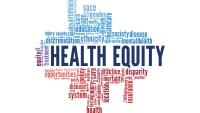What have we learned in the 3 years since ANA launched the HealthyNurse® Health Risk Appraisal (HRA)? Since November 2013, more than 13,500 RNs and nursing students have participated in this landmark survey, which was developed in collaboration with Pfizer Inc. The free, HIPAA-compliant, electronic survey serves many purposes. First and foremost, after completing the HRA, any RN or nursing student can identify personal and professional health, safety, and wellness risks. Second, they can compare their results to national averages and ideal standards. Third, the HRA connects participants to important resources related to specific risks. Finally, it provides real-time aggregated data on nurses’ health, safety, and wellness, allowing ANA to identify where programs and resources are most needed to improve the health of the American nurse.
The HRA is roughly divided into three sections:
1. demographics, including age, gender, ethnicity, and education
2. occupational, including safe patient handling and mobility, workplace violence and incivility, needlesticks, fatigue, and more
3. general health, safety, and wellness, including immunizations, preventative care, nutrition, exercise, sleep, and distracted driving.
The HRA has undergone one major revision (in 2014). This included the addition of nursing quality measure and program questions, such as whether the participant’s workplace has achieved Magnet® Recognition or Pathway to Excellence® designation from the American Nurses Credentialing Center, or if the participant’s employer measures nursing quality in some manner. Also, a question was added inquiring about participation in a new nurse residency program after graduation, and ANA’s listing of constituent/state nurses associations and organizational affiliates was updated. In addition, the look of the HRA has been evolving through updated graphics and the directions for use have been refined.
Key findings
In October 2014, ANA, along with LCWA Research Group, analyzed the first year’s results. In October 2016, Insight Consulting Group began analysis of the aggregate data. The following data and the graph above reflect several key results. The percentage of nursing student participation increased between 2014 and 2016 from 8% to 17%. The vast majority of participants continue to be actively employed in nursing. The top four work settings continue to be the hospital, acute care, academia, and medical-surgical. The top five workplace hazards for which nurses believe they are at high risk remain unchanged. (See Top health and safety hazards).
In regard to workplace bullying, respondents have experienced more aggression from peers (48%) than authority figures (39%). Twenty-five percent have been physically attacked by patients or their visitors but only 9% are concerned for their physical safety. While 77% are comfortable reporting workplace violence, only 65% are comfortable reporting workplace bullying. Respondents show a dip in hours of sleep over 24 hours, from an average of 8 in 2014 to an average of 7 in 2016. Also, respondents continue to not eat the daily recommended servings of fruits, vegetables, and whole grains.
Want to learn more? View the 2014 executive summary of the HRA.


















